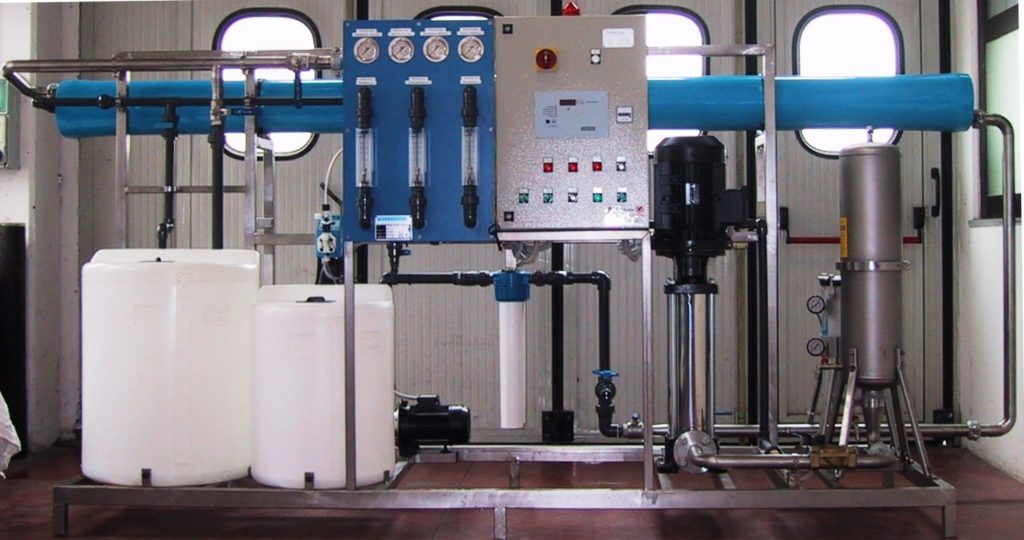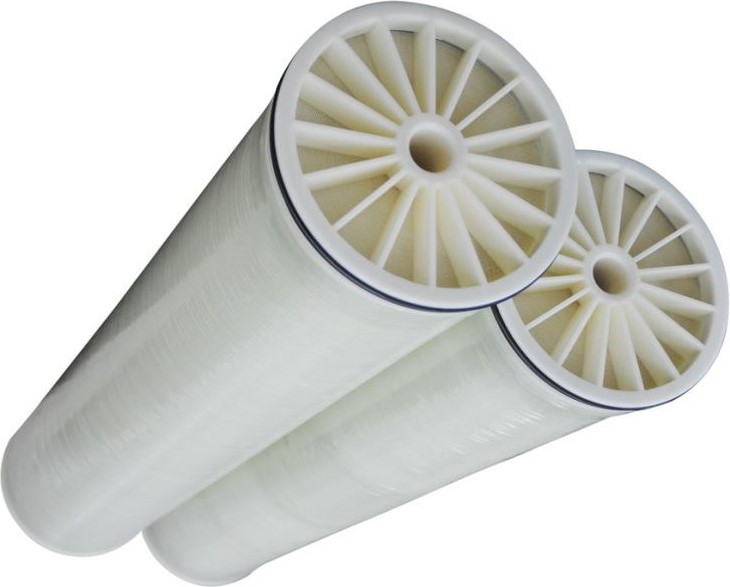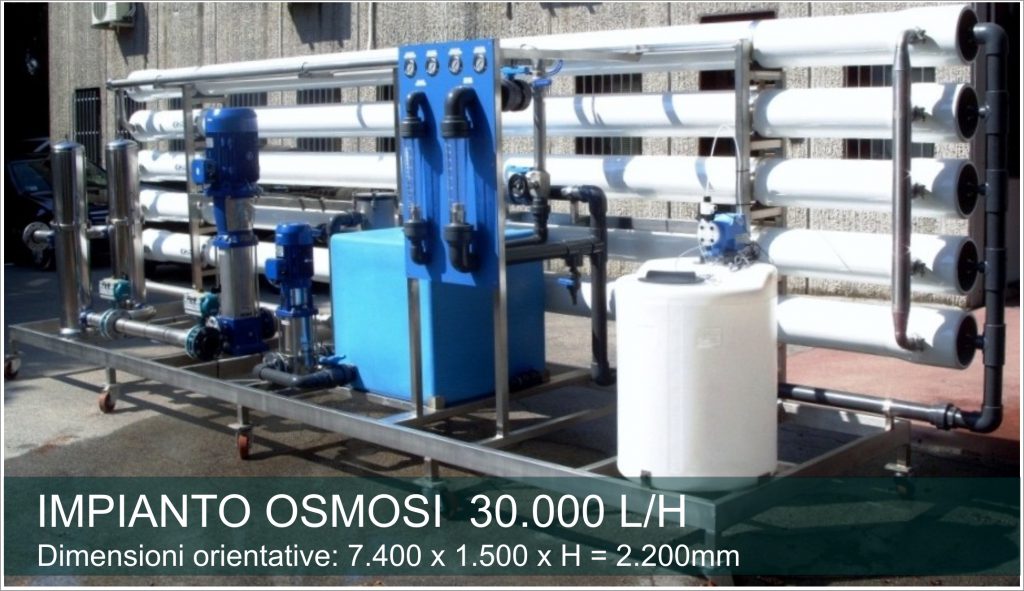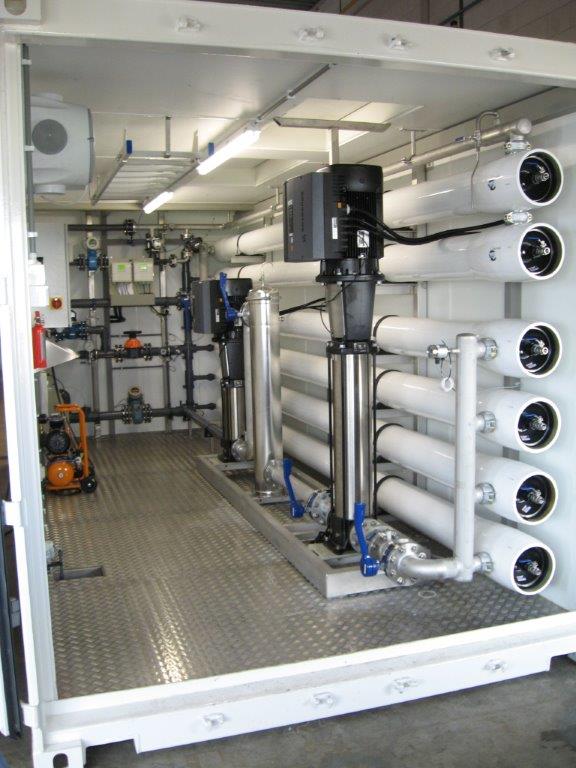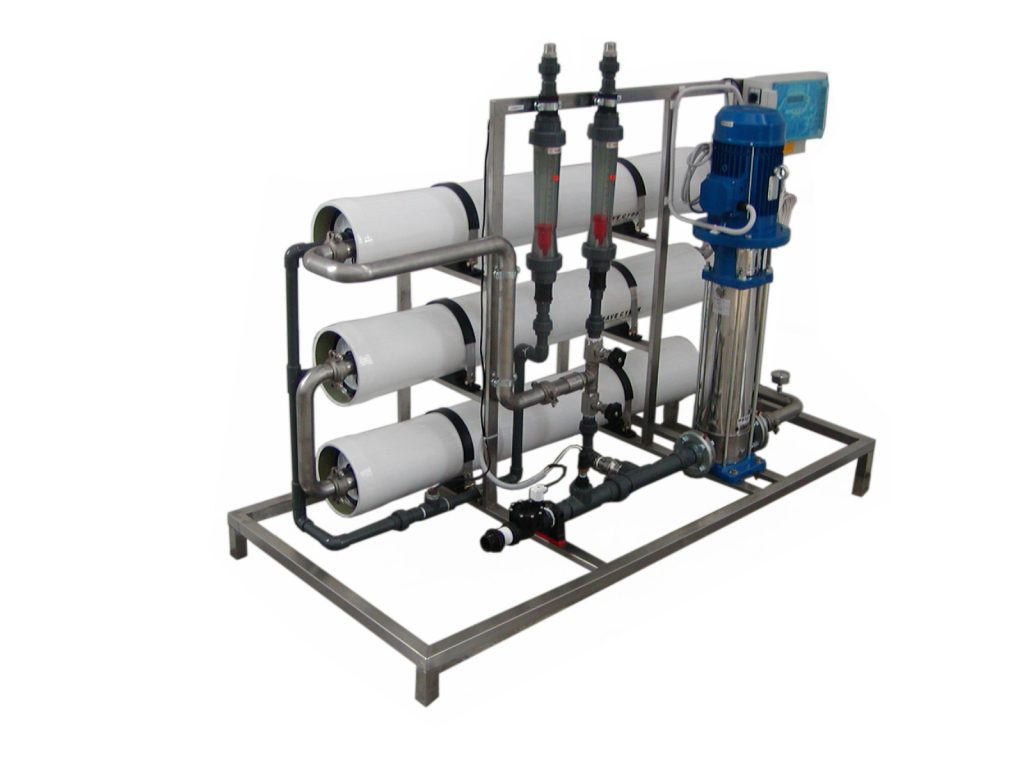The pre-treatment of water to feed a reverse osmosis system is indispensable.
The degree of filtration of the osmotic membranes is very high and it is not possible to send solid or suspended materials, or salt concentrations that can precipitate in osmosis plants, this is necessary to avoid the risk of a rapid and irreversible clogging of the membranes and to realize an efficient plant over time.
The pre-treatments are basically filtration systems, the simplest filtration adopted is an absolute mechanical filter of 5 microns, this filter is called “guarantee” because the water is already compliant to be sent to the reverse osmosis plant but is filtered for guarantee.
The filtration pre-treatments installed before a reverse osmosis plant are:
- ultrafiltration systems
- quartz filtration equipment, depth filtration
- activated carbon system, absorption of organic substances
- softening plants, to eliminate the presence of calcium and magnesium.
The ultrafiltration system is used in specific cases, specific membranes perform adequate filtration suitable for reverse osmosis systems, this technology has a similar result to the one of quartz filters.
The limitation of marketing is given by its high cost.
Mechanical quartz – quartzite filtration is the most used, as this type of filtration guarantees high quality filtration, filtration is deep and around the single micron, and the filter and quartz guarantees high containment of suspended and sedimentable solids, automation eliminates the need for personnel.
Active carbon filtration systems absorb organic substances, oils and hydrocarbons, these substances creating an organic film that covers and clogs the osmotic membranes, which decrease the performance of reverse osmosis systems.
The softening plants use ion exchange resins with sodium cycle to eliminate calcium and magnesium, these substances increase their concentration during the service of the reverse osmosis plant, and they deposit on the membranes aggregating, this leads to a progressive clogging of the membranes.
If the presence of calcium is not excessive, it is sufficient to dose an anti-precipitating chemical reagent to counteract and eliminate the problem.
